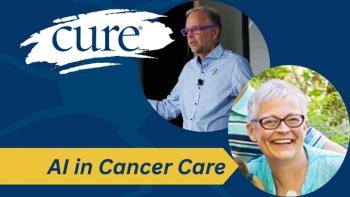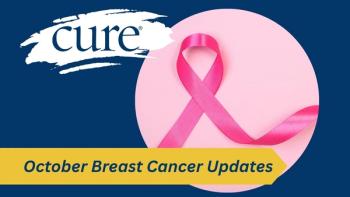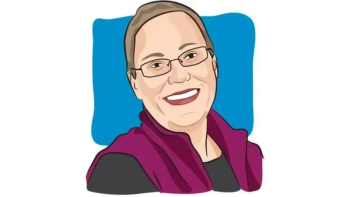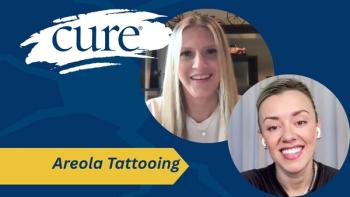
Neuroendocrine Tumors: Expert Care
Transcript:
Shubham Pant, MD: One of the things we talked about—maybe Larry and you could talk about—is that these doctors who talk about it are specialists, like Dr. Morse, in this disease. They spend a good amount of time figuring about this disease, what it is, how the symptoms are, what are the specific symptoms, syndromes, etc. So, how important do you think it is to see a specialist? Like you’ve got in with Dr. Morse within a week. How important do you think it is for patients to find somebody who is a specialist in this disease?
Larry Pleasant: Well, I believe it’s critical, I really do, in rural areas especially. Many general practitioners don’t have the experience to deal with this particular type of cancer; I know this, I live in a rural area. So, if you really want to get the treatment that you need to try to control this disease and maintain your quality of life, you need to be able to reach out to a place and to people who can offer you world-class care.
Shubham Pant, MD: What about you, Maryann?
Maryann Wahmann: I think it’s true. I think a lot of patients don’t realize that sometimes you can go to the specialists and they will work with your local oncologist. I think that every patient at some point in their life needs to go and see a specialist, somebody that treats this disease, because local oncologists don’t have the time. It’s not their fault. They’re treating dozens of different diseases and we are rare. And a lot of times there may be only one or two patients who they’ve ever seen in their lifetime and so they really don’t have the time to dedicate it. So, at one point during your lifespan, or in the journey, you should see a specialist and then have them work with your local oncologist and get the treatment that you deserve.
Shubham Pant, MD: As Larry said, he probably knew more about his disease than some of the doctors he saw. Now Dr. Morse, that brings up a very important point. Not everybody can go to Duke. Not everybody can just get up and say, “I’m driving to Duke.” They could be living hours away, not in the same state, because there are not many doctors like you around. So, do you communicate with a community oncologist? Is that fairly common? How do you deal with this situation for this special disease?
Michael A. Morse, MD: Right. There are many opportunities for us to help out local oncologists. Often people will come, even if it’s for 1 visit, so we can understand their unique case and what issues are critical to focus on in them. But many times, people take the rest of their care until there’s a new juncture in their disease with their local oncologist.
I think there are some areas that we can, in particular, point out that people aren’t always aware of. Some of the symptoms are long-term complications, like carcinoid heart disease for example. It’s not something that people necessarily think about. We focus on this as being a GI tract disease with prominent diarrhea and the flushing. But silently, there can be valve damage going on.
Shubham Pant, MD: Hitting the heart?
Michael A. Morse, MD: Yes, and I’ve even seen people near the time of diagnosis who already had some elements of valvular damage and didn’t know it, and they weren’t quite symptomatic enough where somebody would think about their heart. So, that’s a scenario where we can make a recommendation. We’ll make sure the person has an echocardiogram at baseline, and make sure it’s checked periodically.
Shubham Pant, MD: And to check on the heart, check on the bowels. What kind of symptoms do people have if they have this heart valve disease from this disease?
Michael A. Morse, MD: Well, first of all, we hope people don’t get to the point of being symptomatic. Symptomatic means, typically, the valve is on the right side of the heart. The tricuspid and the pulmonic valve are the ones that are affected. And if they’re severely damaged and scarred up, you have what’s called valvular regurgitation—blood goes in the wrong direction when the heart is pumping. And so, typically people have exercise intolerance. They just can’t do the activities that they normally could. They start swelling because the blood’s not being pumped forward as efficiently.
Shubham Pant, MD: Just staying in the legs?
Michael A. Morse, MD: It’s in the legs, in the belly, or around the lungs. The point is people don’t get adequate forward blood flow and so it backs up, so to speak. And it can severely affect quality of life and eventually can be lethal if the right side of the heart eventually fails. We obviously want to get to people before that happens. In some cases, people need valve replacements. And if somebody has had a valve replacement, it’s important to protect that valve so they don’t need another valve replacement in the future. So, what we currently do is try to get an understanding of how much serotonin the person is making. We talked earlier that although you can measure serotonin levels in the blood stream it can be…
Shubham Pant, MD: It can be challenging?
Michael A. Morse, MD: It can fluctuate quite a bit. And the better test is the metabolic breakdown product of serotonin 5HIAA, typically done in the urine. There is a way of doing it in the blood now, but most people have it done in the urine. And if we find people have particularly high levels, and even if they’re already on a somatostatin analog at that point, we take that very seriously because the very high levels are associated with a greater risk of having carcinoid valve damage. And fortunately, we can measure that. We can do the echocardiograms and decide if we need to intervene to try to control their serotonin more or make sure they’re seeing a cardiologist to understand when valve replacement may be an issue.
Shubham Pant, MD: So, a lot of little nuances. It seems like this is true, every patient is unique in this. Larry was unique, Maryann, you were unique in your symptoms, so…
Maryann Wahmann: That’s one of the reasons why we chose the zebra as our logo and as our awareness, because no two zebras have the same stripes. And a lot of people believe that in medical school, the doctors are taught that when hearing hoofbeats, think of horses not zebras. Look at the common, not the uncommon. It’s very easy for the doctors to assume that when you’re having a lot of diarrhea or anything like that, the first thing they say is IBS; it’s easy. But we’re uncommon.
And the second reason is because no two zebras have the same stripes. There are no two NET patients or carcinoid patients who are exactly the same. We all respond differently; we all have different symptoms. It’s not a cut-and-dried situation. Like most cancers, after five years, you’re either gone or you’re released from your oncologist. You are a lifetime patient with this. And there are many of us who are out there 15, 20, or 30 years. And so, a lot of times, it’s treated as a chronic disease. But there are so many facets to this disease. It’s very difficult, it’s very frustrating sometimes for the patient as well as for the doctor.
Shubham Pant, MD: So, when they call you at night, is it mostly patients who’ve been diagnosed or somebody who’s having the symptoms and they go, “Well, I’m not really sure what I have”?
Maryann Wahmann: I would say 90 percent of our calls are from patients who are already diagnosed and are concerned. And I would say 10 percent of the time we do get calls from people who say, “My doctors have exhausted everything and they’re saying they’re not really sure, could you give me a list of what bloodworks I should be getting done? Maybe we can pick up something soon.” And so, we do. I always encourage patients that if they’re going for the colonoscopy, go ahead and get a pediatric scope, because…
Shubham Pant, MD: Do the big one but do the small one, definitely.
Maryann Wahmann: Yes. I’m very grateful for my GI doctor because if he had not, I really don’t know where I would be today. And since he has found mine, he has found six other patients using the pediatric scope in the last 16 years. So, it does work.
Transcript Edited for Clarity





